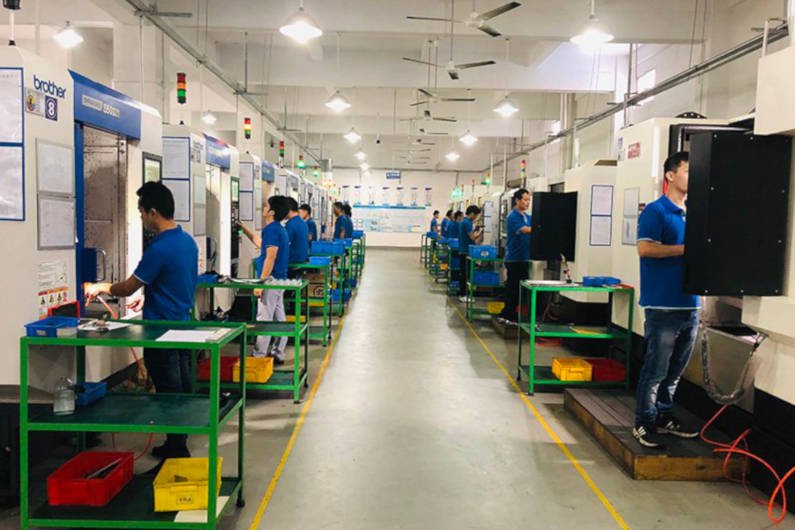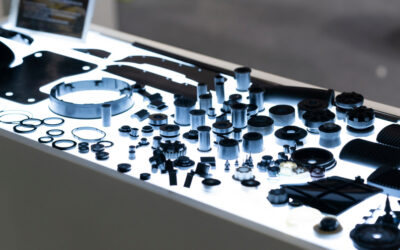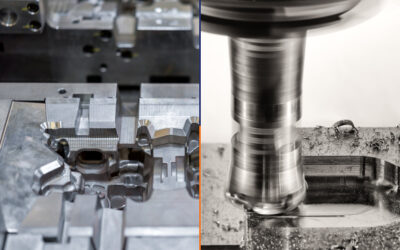When you need to cut intricate shapes out of sheet metal or acrylic, there is often no better tool than a laser cutter. This cutting technology uses high-powered lasers to quickly and precisely cut through materials with incredible accuracy. Not only can laser cutters be used to make clean, crisp cuts in all kinds of materials, but they also have the ability to engrave designs into surfaces as well.
However, not all laser cutters are created equal. Some have more powerful lasers, which allows them to work with thicker materials or create deeper cuts. Others may have more advanced features like auto-feeders or dual-laser capabilities, which can increase the speed and efficiency at which you can process your projects.
One popular option is fiber laser cutting machines, which are a type of CNC laser cutter. This article will discuss the basics of fiber laser cutting machines and how they work.
What is a Fiber Laser Cutting Machine and How do Fiber Lasers Work?
At its core, a fiber laser cutter is a highly specialized device that uses laser technology to manipulate a variety of materials. This type of machine produces precise, high-quality cuts in a wide range of different materials.
The key component of the fiber laser cutting machine is the fiber laser itself, which produces a highly focused beam of light capable of cutting through even some of the toughest materials with ease.

Schematic diagram of high power fiber laser using a double-clad fiber
Image Source: Danielsoh8, CC0, via Wikimedia Commons
While the basic principles behind these cutting machines are largely the same as those used in other conventional laser cutters, the main difference lies in how energy is transmitted and focused onto a workpiece.
Let’s discuss the basics of how a laser works. At a basic level, a laser is made up of three main components:
- A gain medium
- Optical pumping
- Mirrors
The gain medium is the material in which photons are generated and amplified, while the pumping creates electrical energy that is turned into photons within the medium. Finally, the mirrors reflect light over and over again until it creates a beam of concentrated light known as a laser beam.
This process relies on the careful regulation of electromagnetic wavelengths, which allows laser beams to transmit information with incredible precision and efficiency.
In contrast, a fiber laser cutter utilizes a series of optical cables made from thin strands of fibers that transmit light waves directly into the material being worked on. This property allows for greater precision and more focused heat concentration, resulting in cleaner cuts and higher-strength bonds between materials.
Other important components of this machine include the software that controls it and the parts that guide and support the material being cut.
Additionally, fiber lasers can be used with many different shapes and sizes of cutting heads, which allows them to be customized according to specific needs and applications. Overall, fiber lasers represent a state-of-the-art tool for cutting and manipulating all types of materials with unparalleled speed and accuracy.
Fiber Laser Cutting Machine Benefits

- Precise, fast, and high-quality cutting: The fiber laser cutting machine produces precise and clean cuts with little to no distortion, making it an ideal choice for a wide range of materials.
- Increased efficiency: With a faster cutting speed than traditional methods, the fiber laser machine allows you to complete more jobs in less time.
- Reduced downtime: Fiber lasers are far less susceptible to breakdowns and require very little maintenance, meaning your machines will be up and running more often.
- Versatility: The fiber laser’s ability to cut through a wide range of materials makes it the perfect tool for any job.
Fiber Laser Cutting Machine Drawbacks

- Power consumption: One of the biggest disadvantages of this cutting method is its high energy consumption and dependence on certain types of lasers, which can be costly to maintain.
- Expensive parts: The components used in fiber laser cutters are often more expensive than those found in other types of cutting equipment.
- Potential harm: Workers who come into contact with this beam may experience burns or other injuries as a result.
- Material choice: Fiber lasers may not be suitable for all types of metals, including silver.
Silver Considerations
When working with materials such as silver, it is crucial to pay careful attention to their unique properties. Silver, for example, has a relatively high melting point and is prone to heat warping during laser-cutting operations.
This property means that in order to effectively machine parts from silver, machine shops often need to use specialized equipment and techniques. One common solution for dealing with this issue is the use of a heat sink bracket.
The heat sink acts as a buffer between the laser and the workpiece, evenly distributing any excess heat and preventing it from causing excessive warping or damage to the workpiece. Ultimately, using a bracket as a heat sink in fiber laser cutting operations gives manufacturers greater flexibility when choosing materials while also ensuring that they can achieve optimal results every time.
Laser Precision for the Most Demanding Projects With Gensun
If you are looking for a production partner that can help to reduce your costs while maintaining high-quality standards, look no further than Gensun. Our state-of-the-art laser cutting services are second to none, enabling us to deliver the highest quality results quickly and efficiently.




